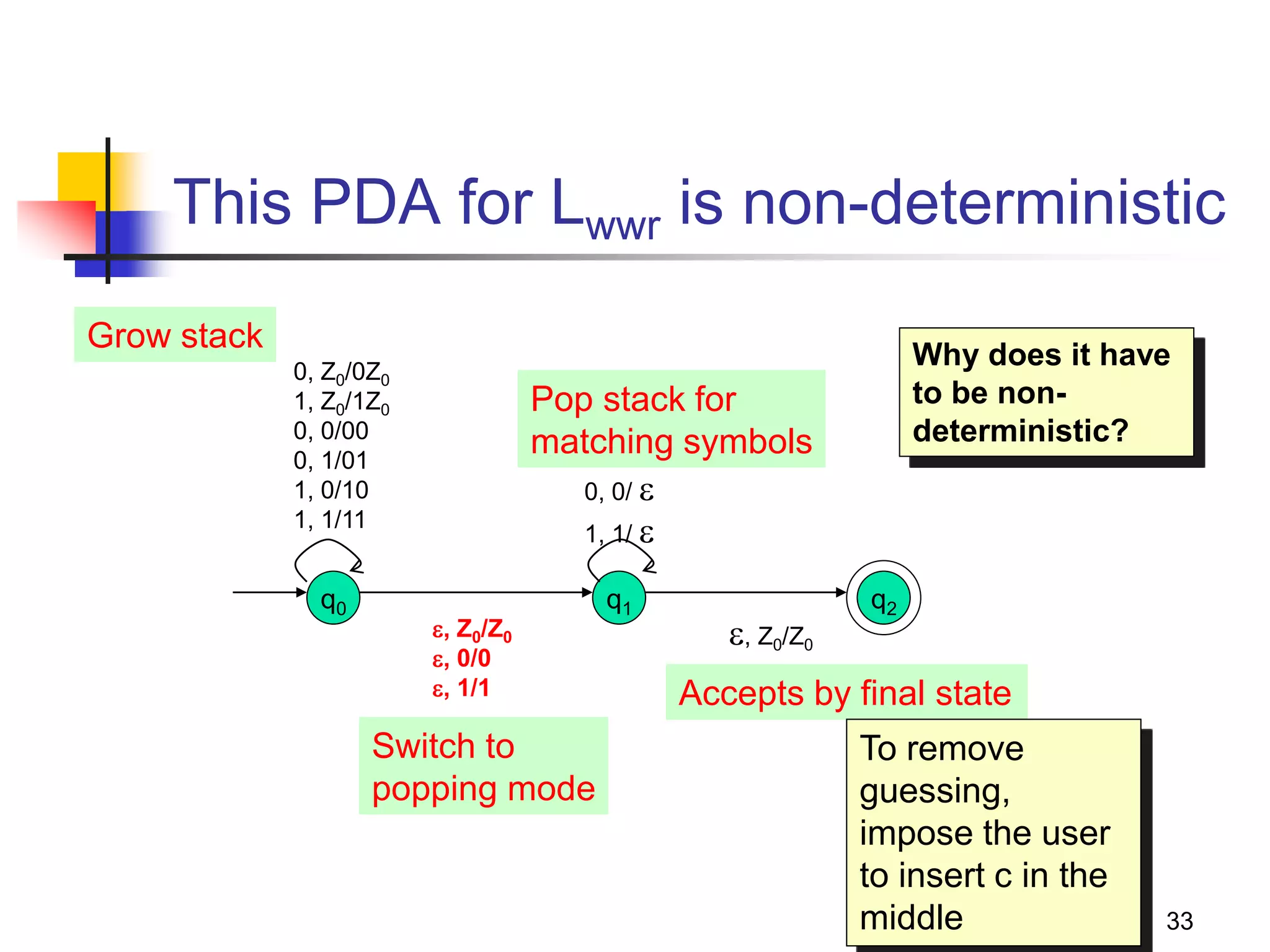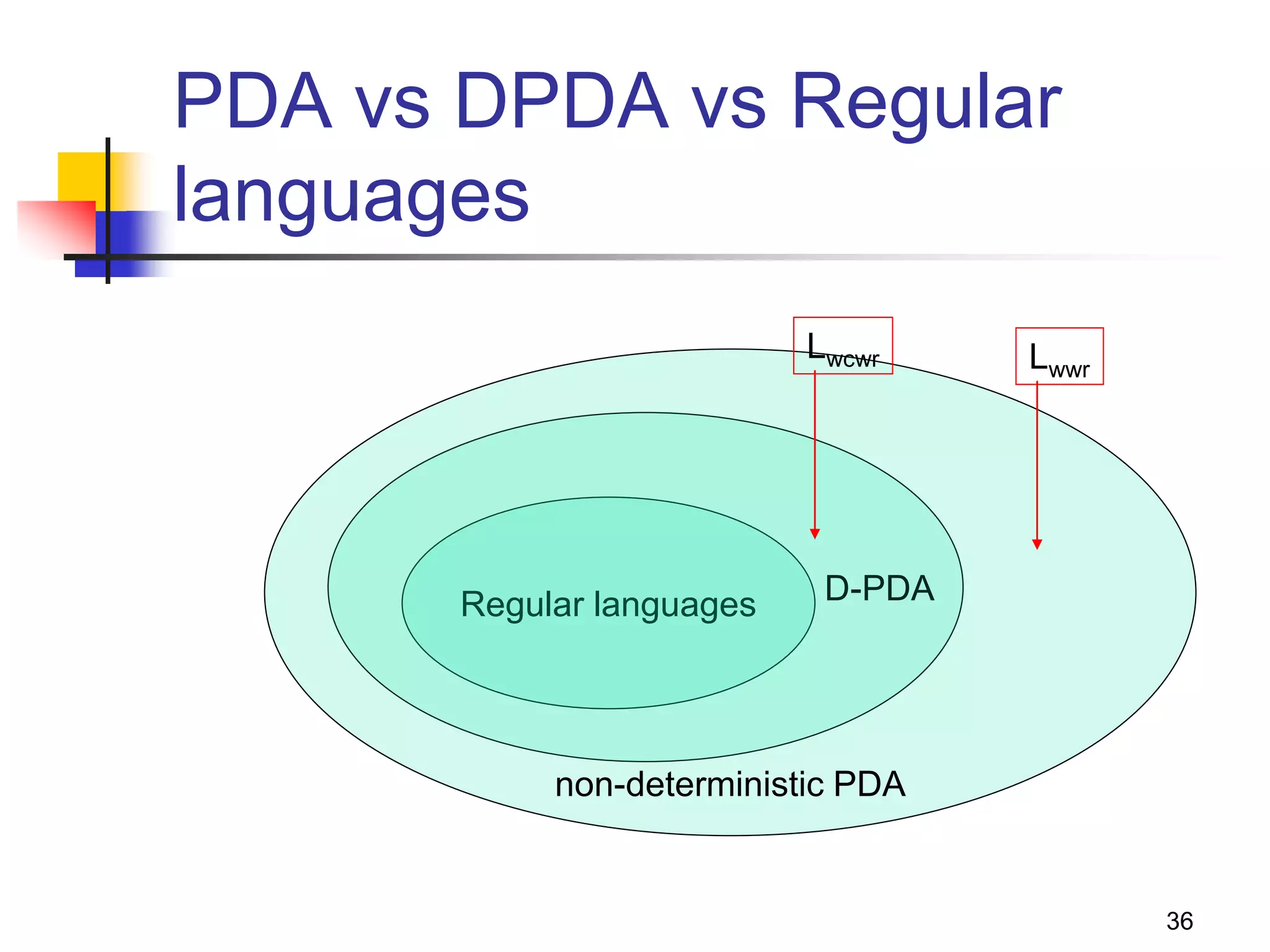This document describes pushdown automata (PDA) and how they are used to recognize context-free languages. It provides definitions of PDA, including their components and transition function. An example PDA is given for the language of balanced parentheses. The document also discusses how PDA can accept by final state or empty stack, and how PDA are equivalent to context-free grammars. It describes how to convert between PDA that accept by final state vs empty stack, and how to construct a PDA from a given context-free grammar.
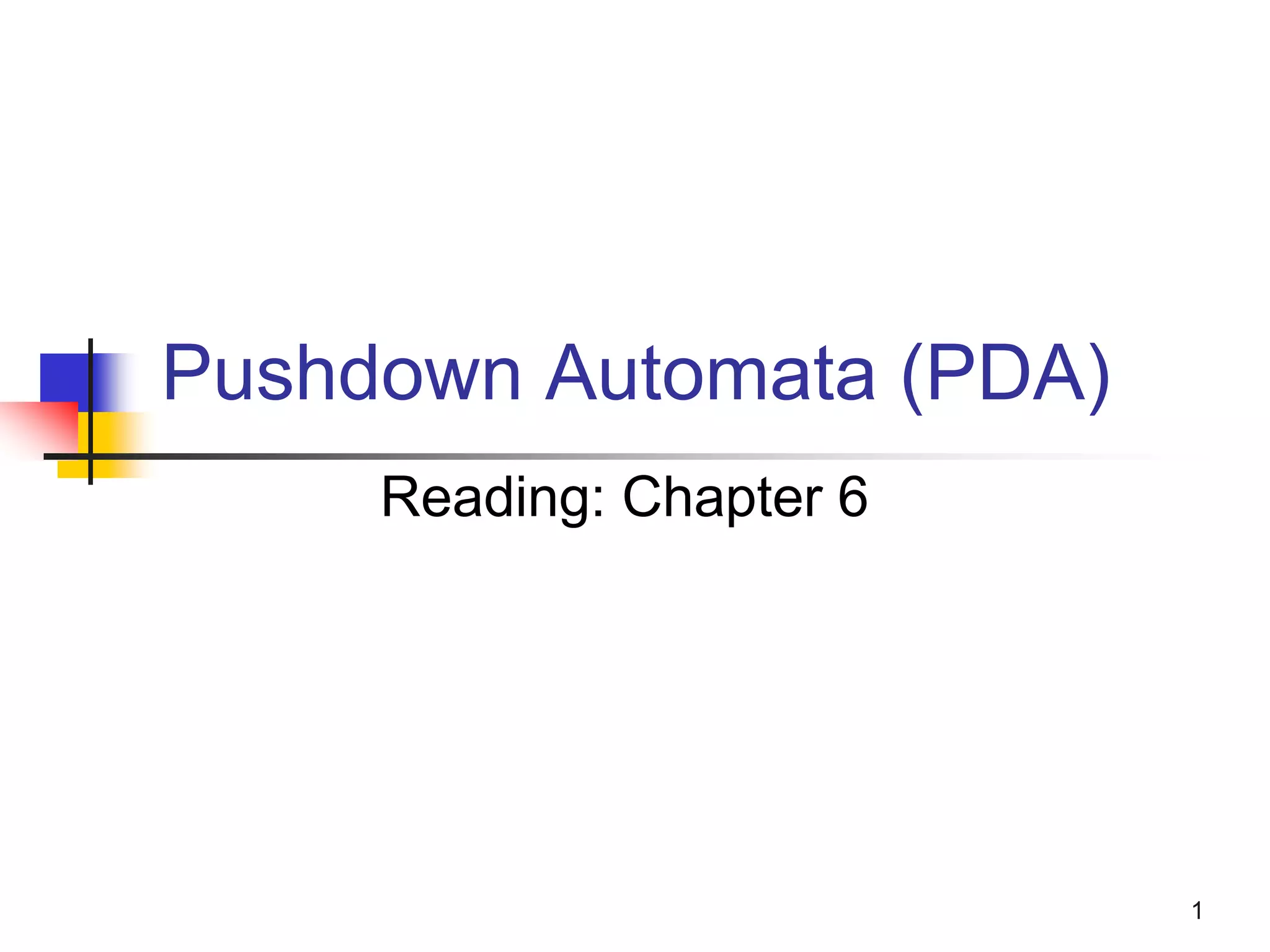
![2
PDA - the automata for CFLs
What is?
FA to Reg Lang, PDA is to CFL
PDA == [ -NFA + “a stack” ]
Why a stack?
-NFA
A stack filled with “stack symbols”
Input
string
Accept/reject](https://image.slidesharecdn.com/pda11-220921121954-0fd09632/75/PDA-1-1-pptx-2-2048.jpg)
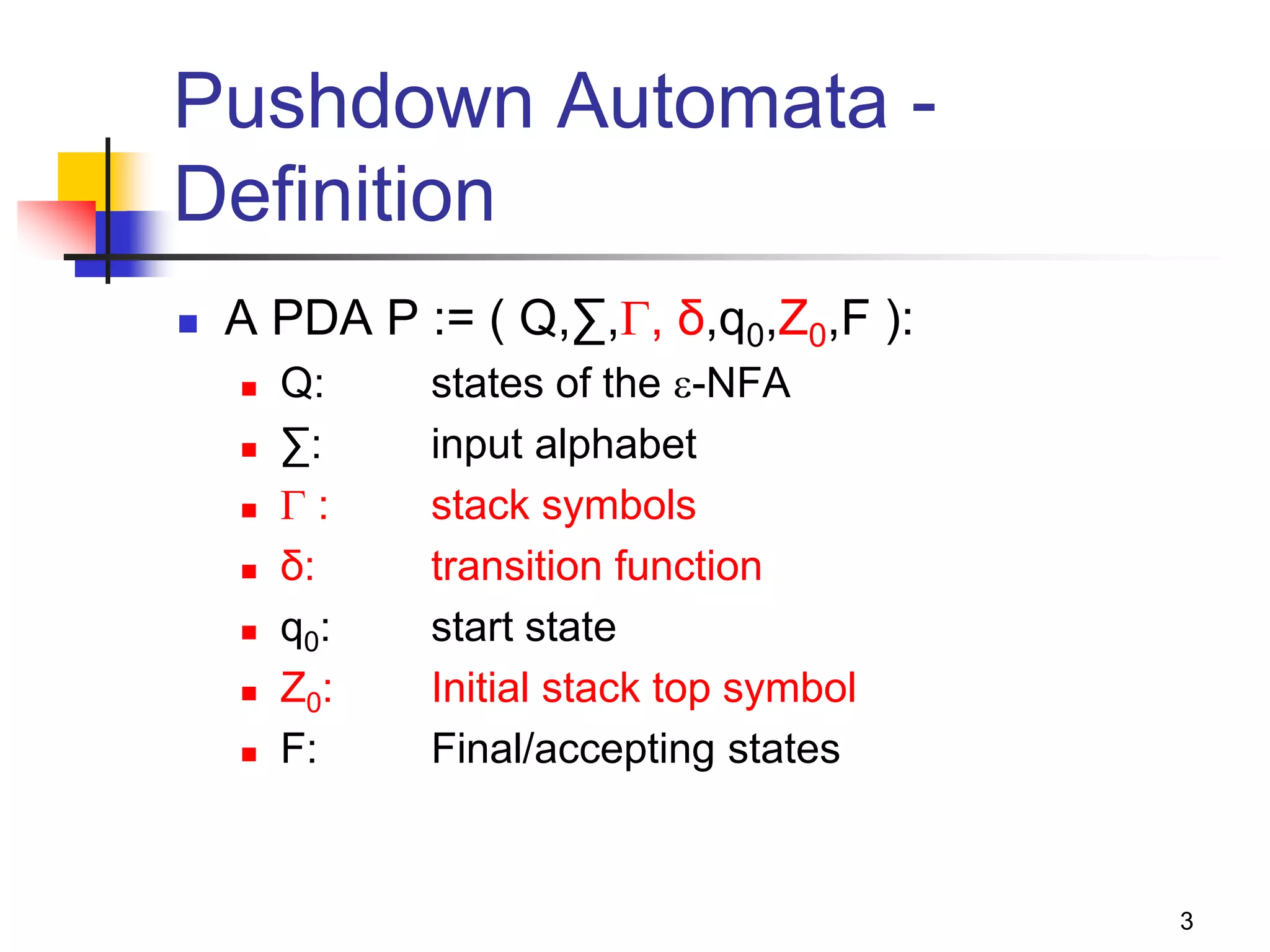
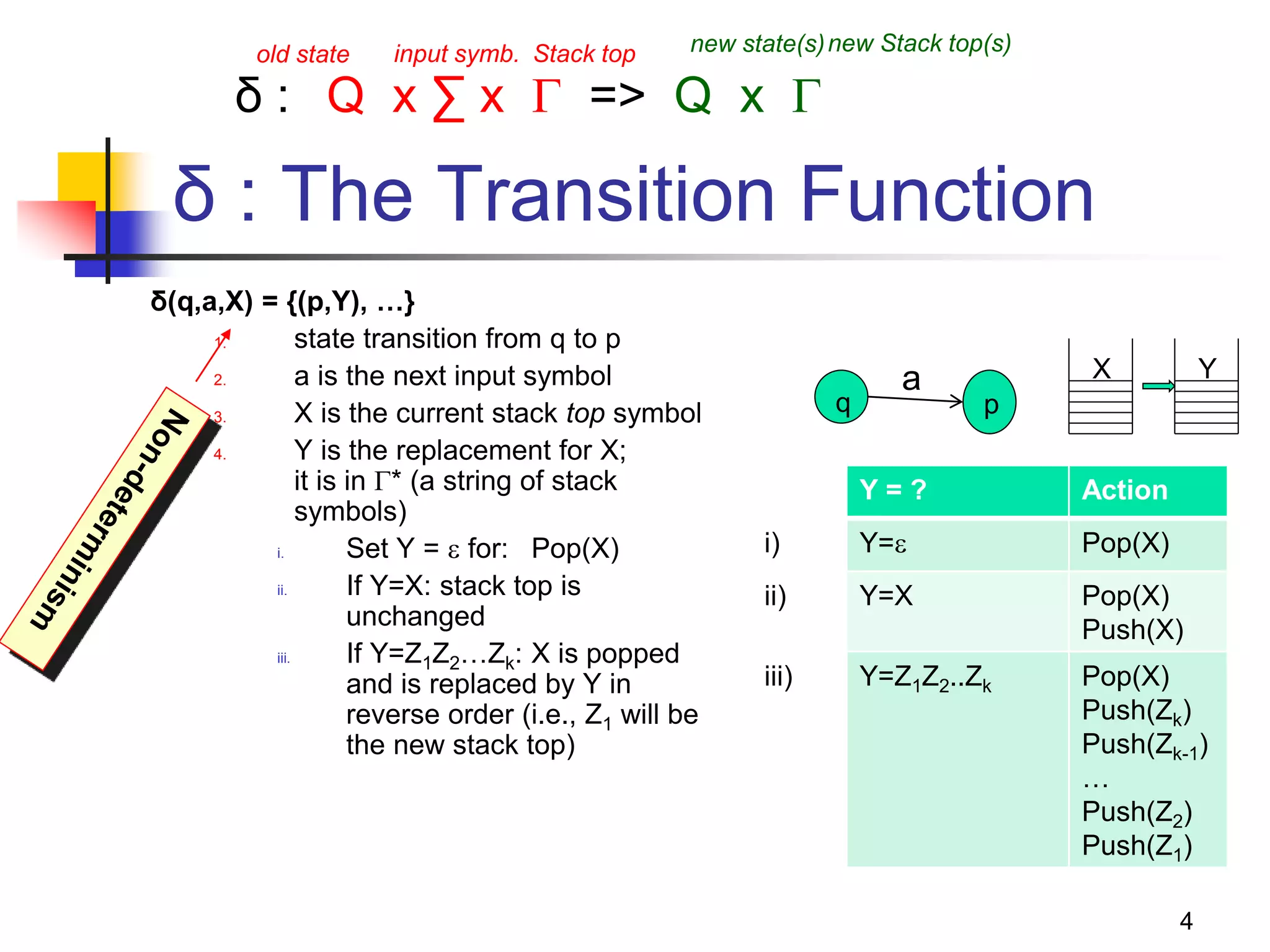
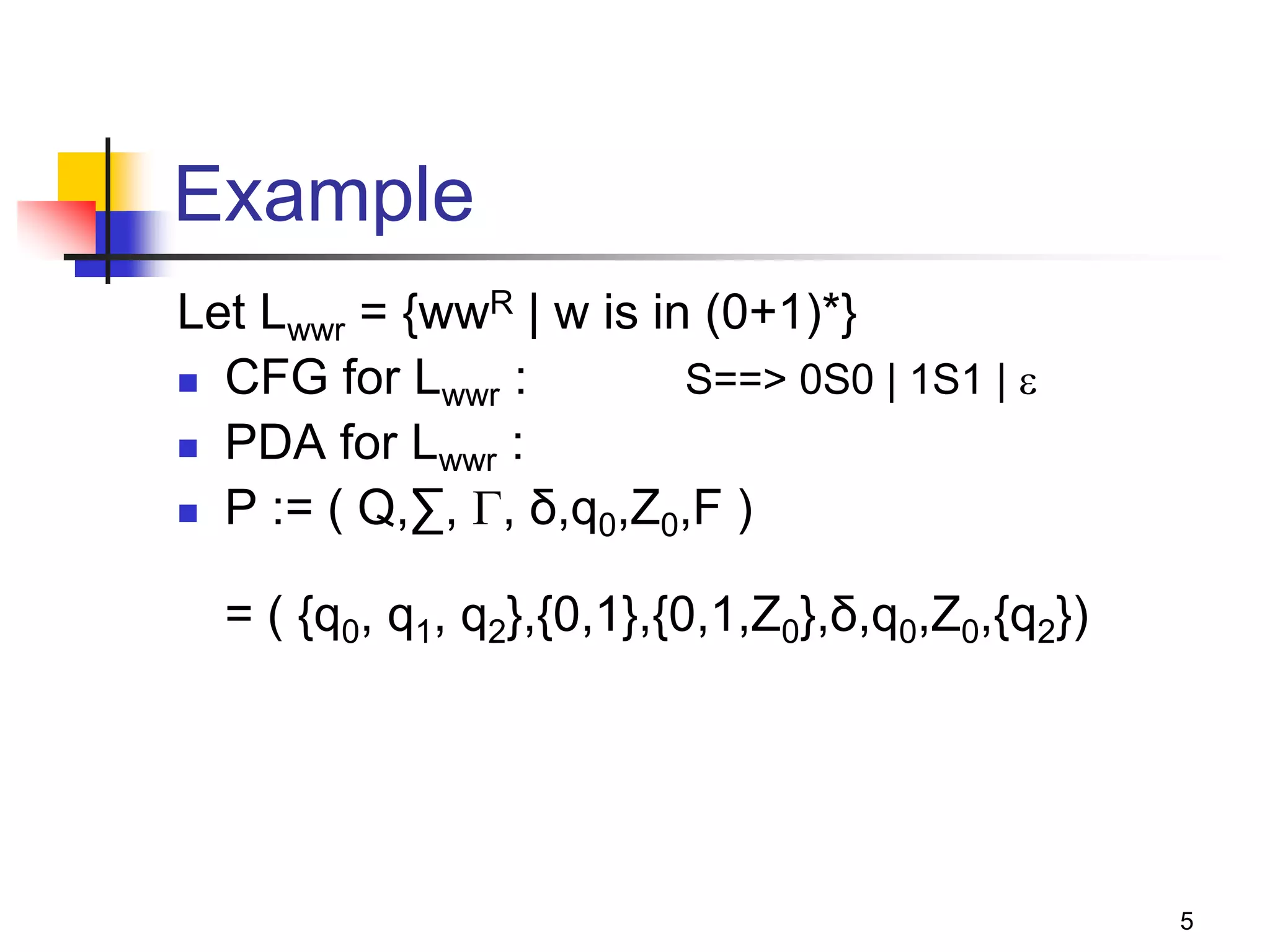
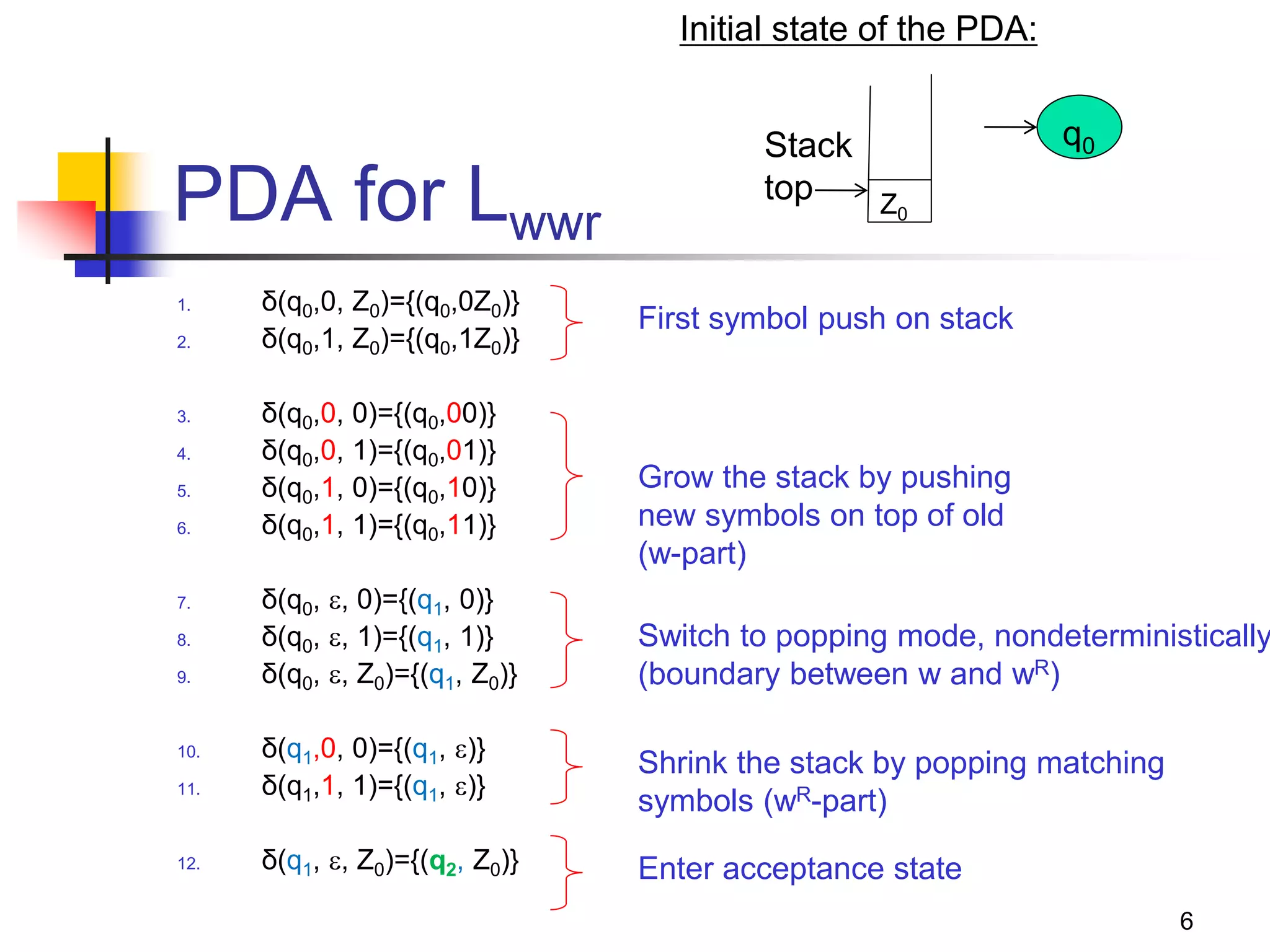
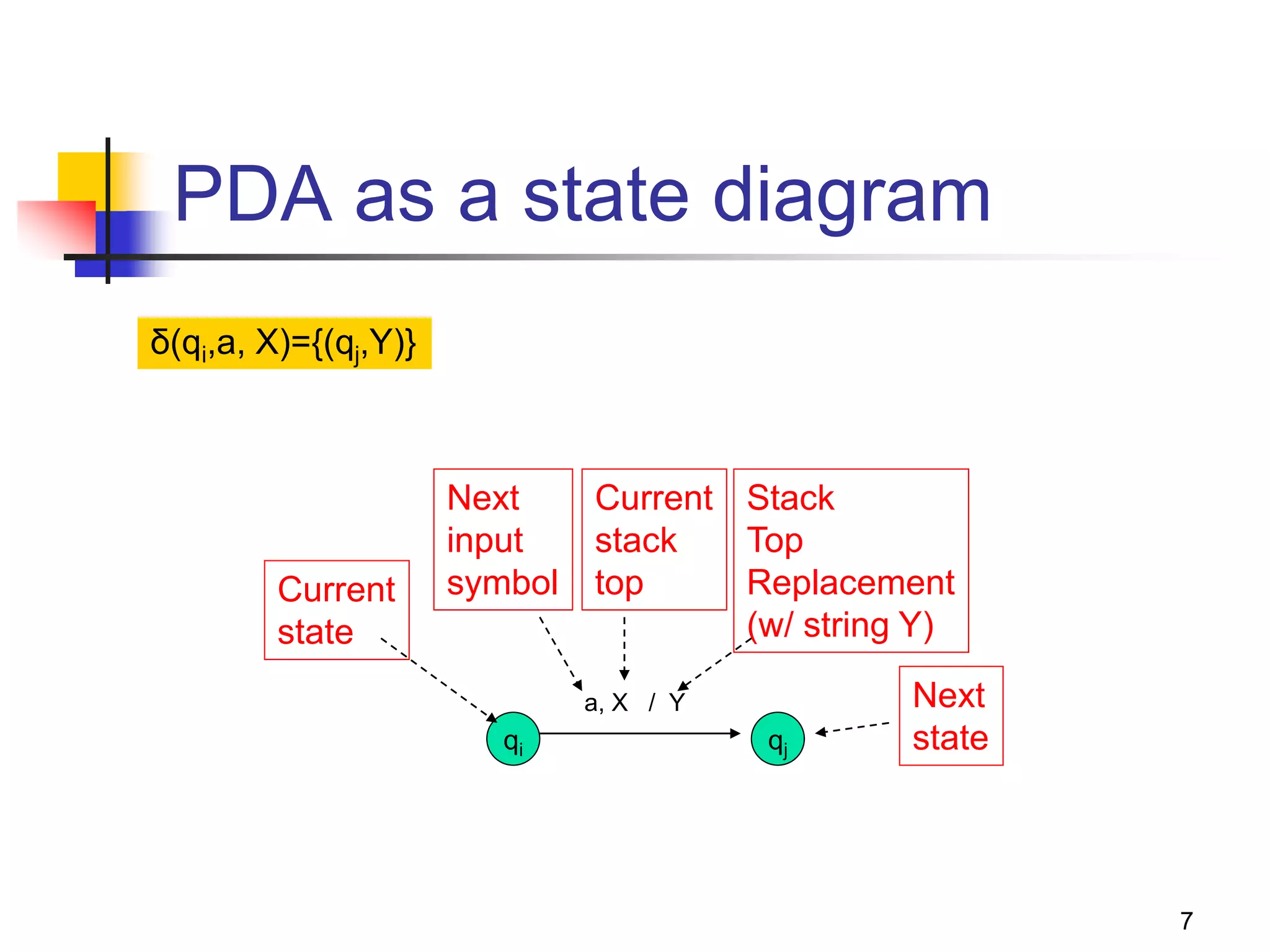
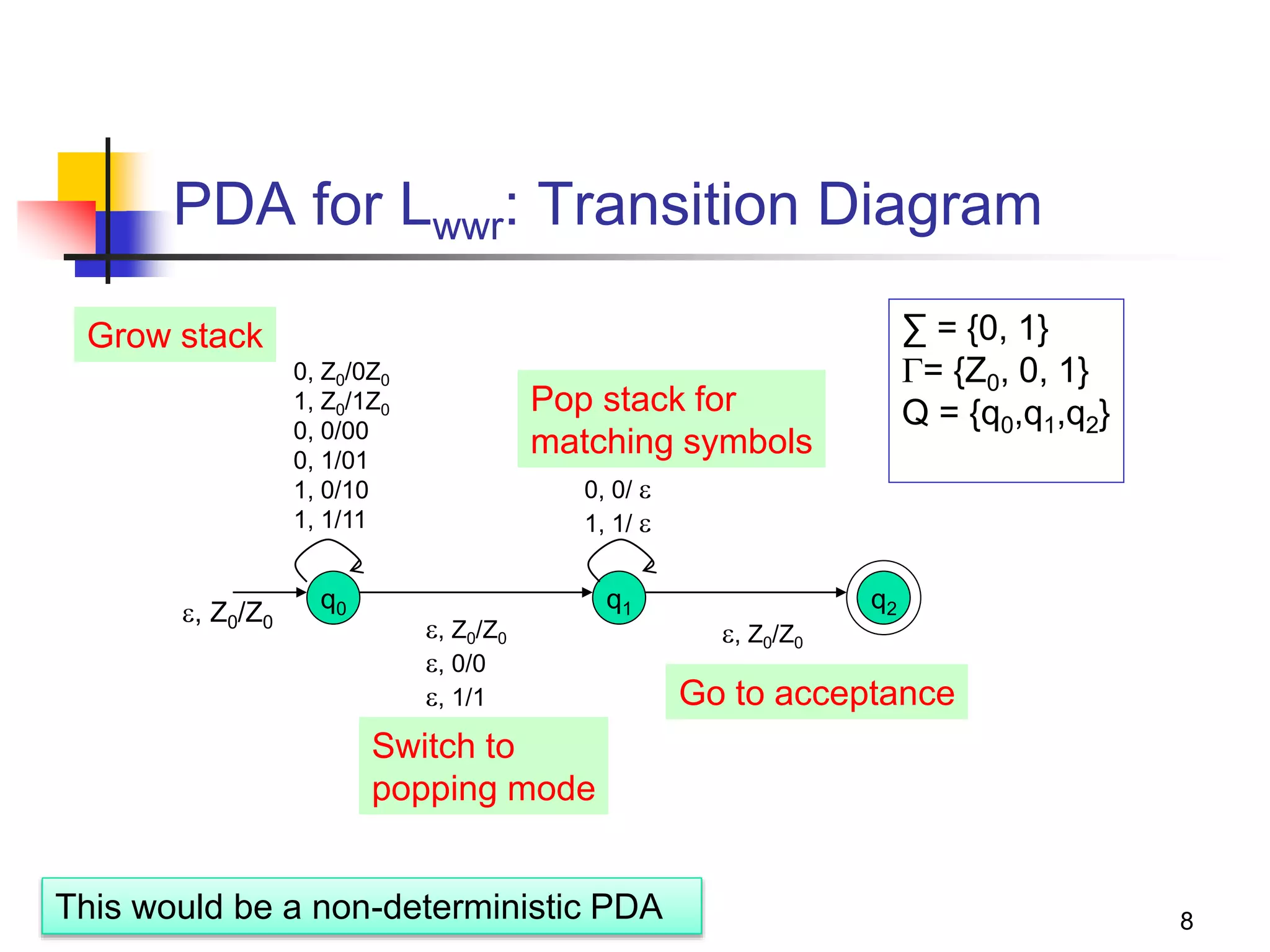
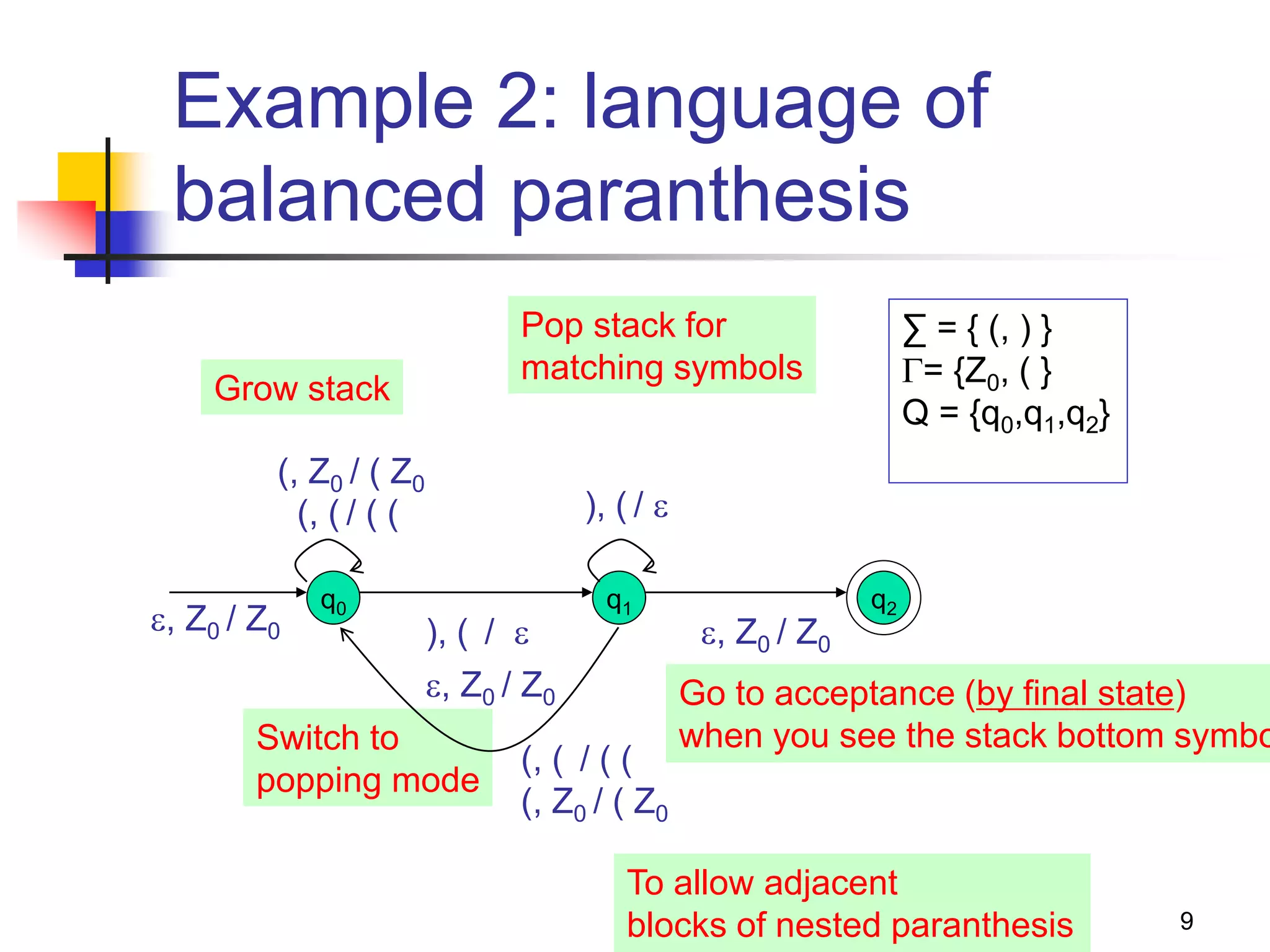
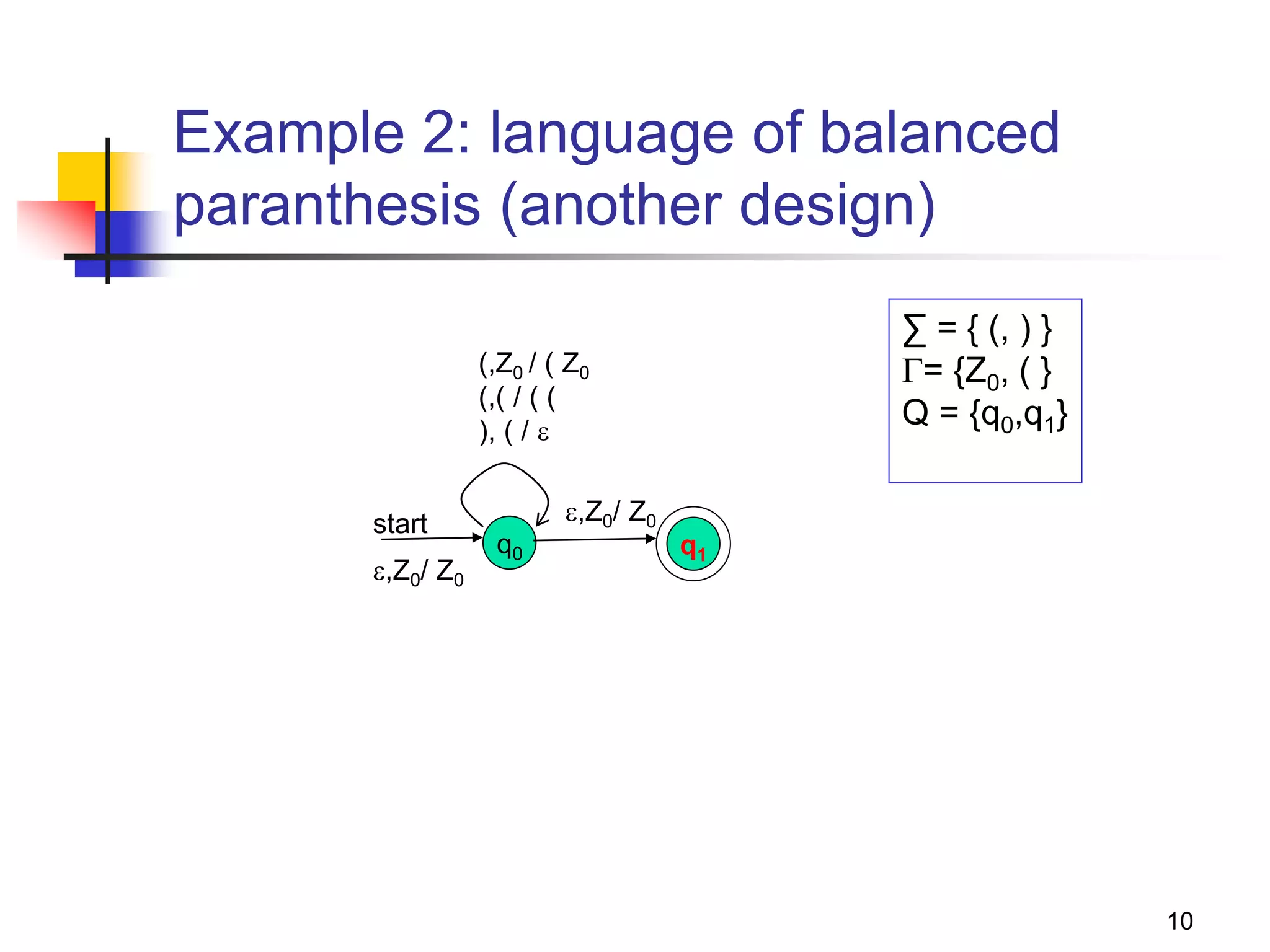
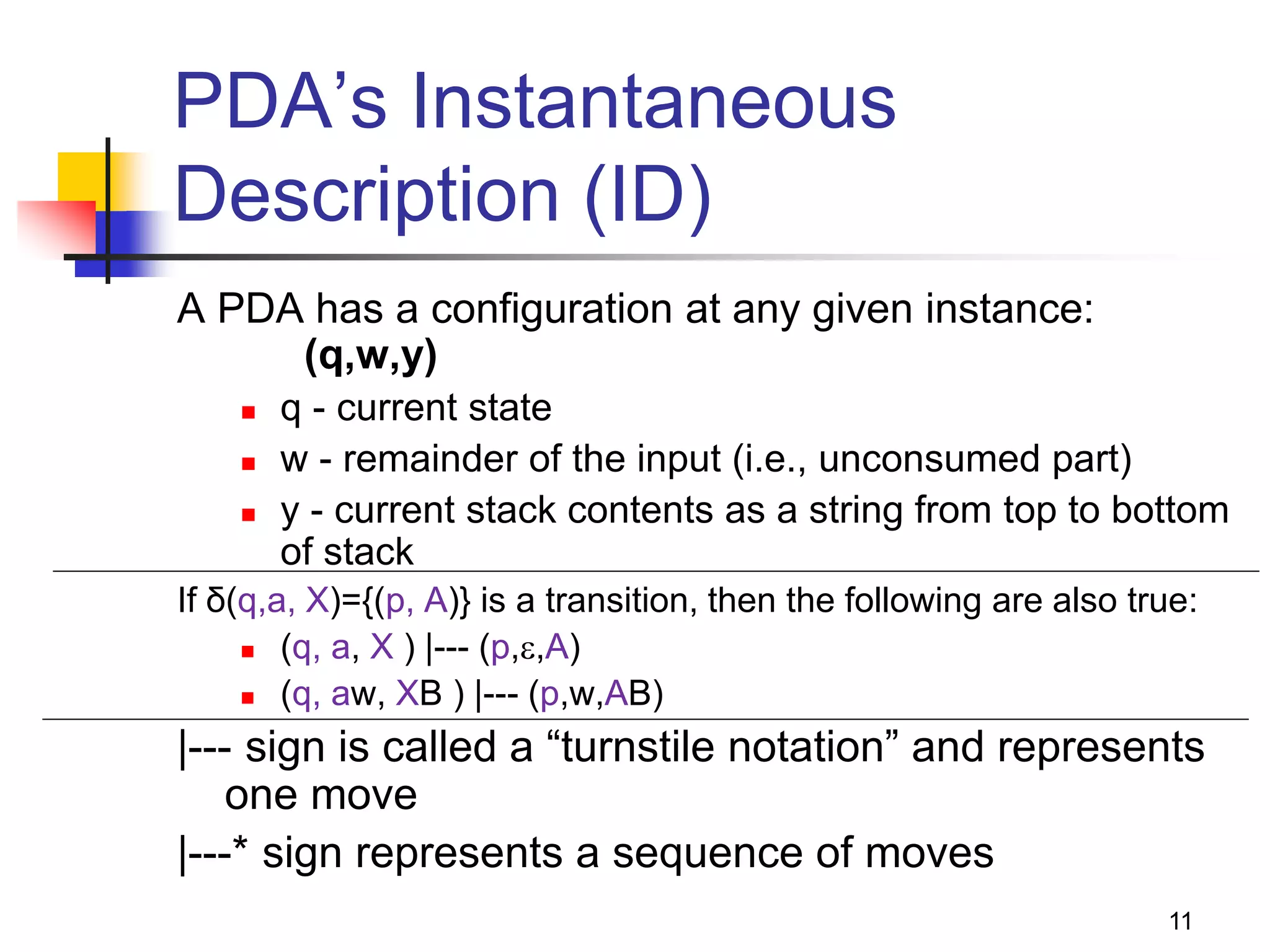

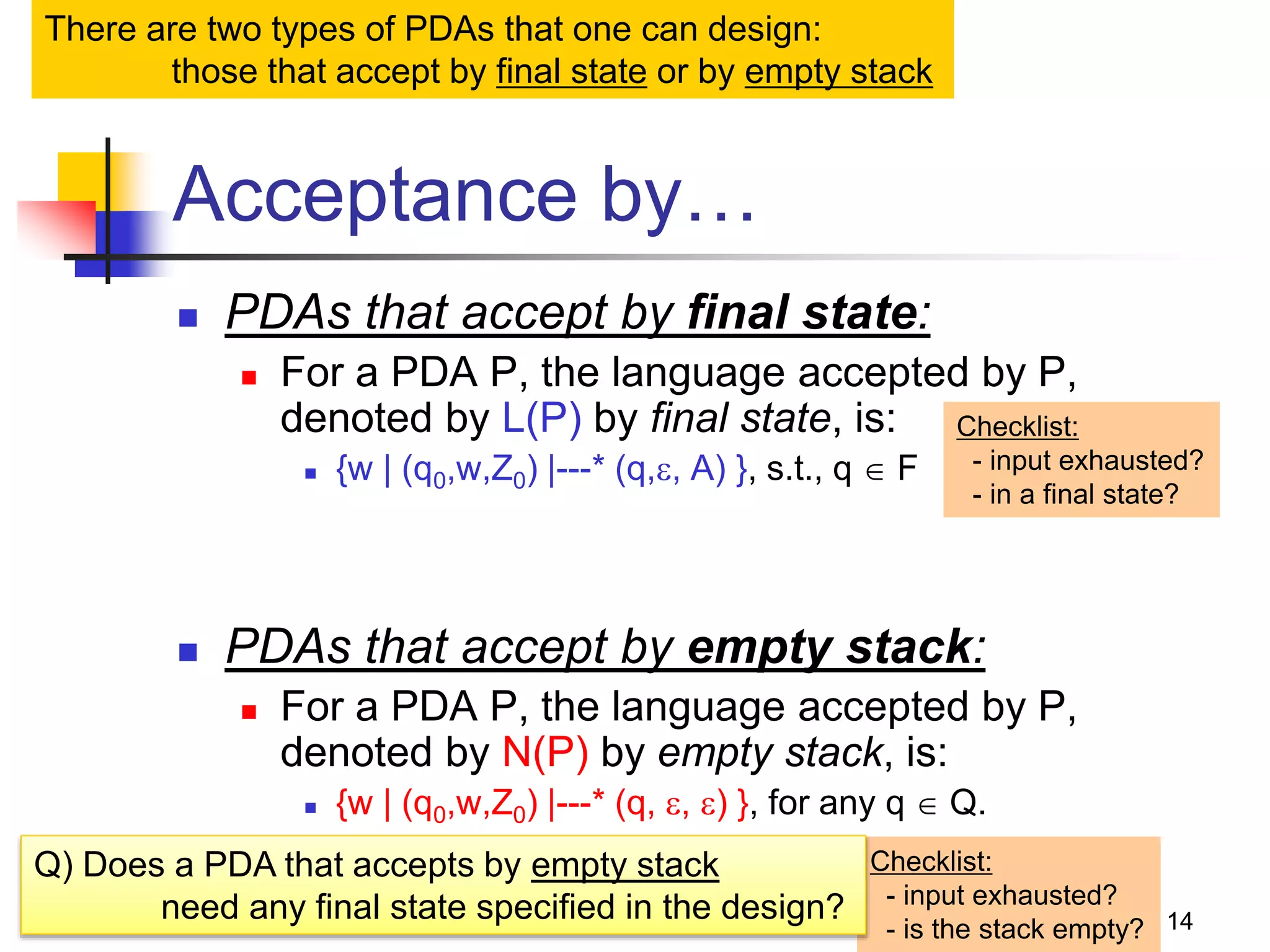
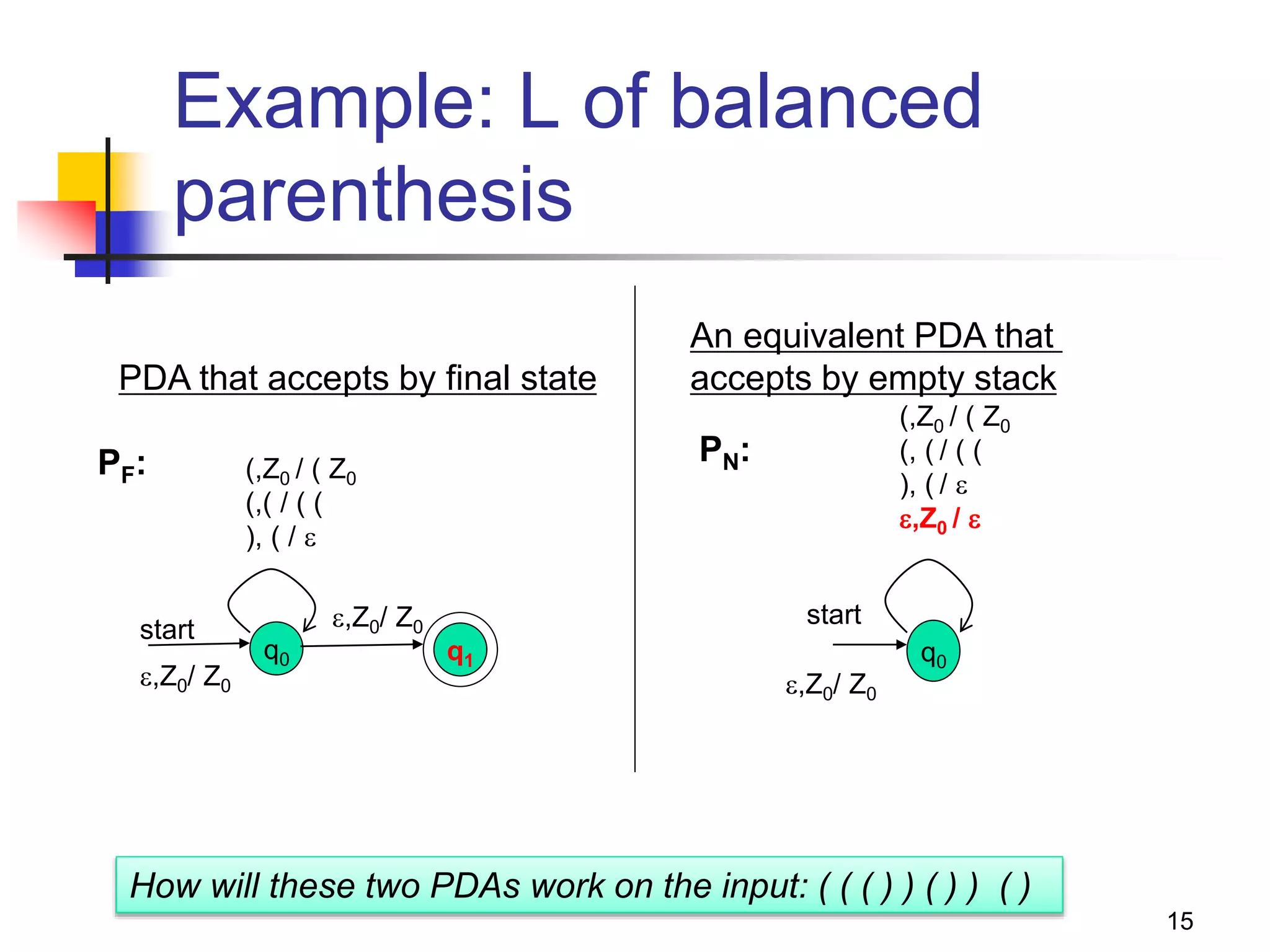
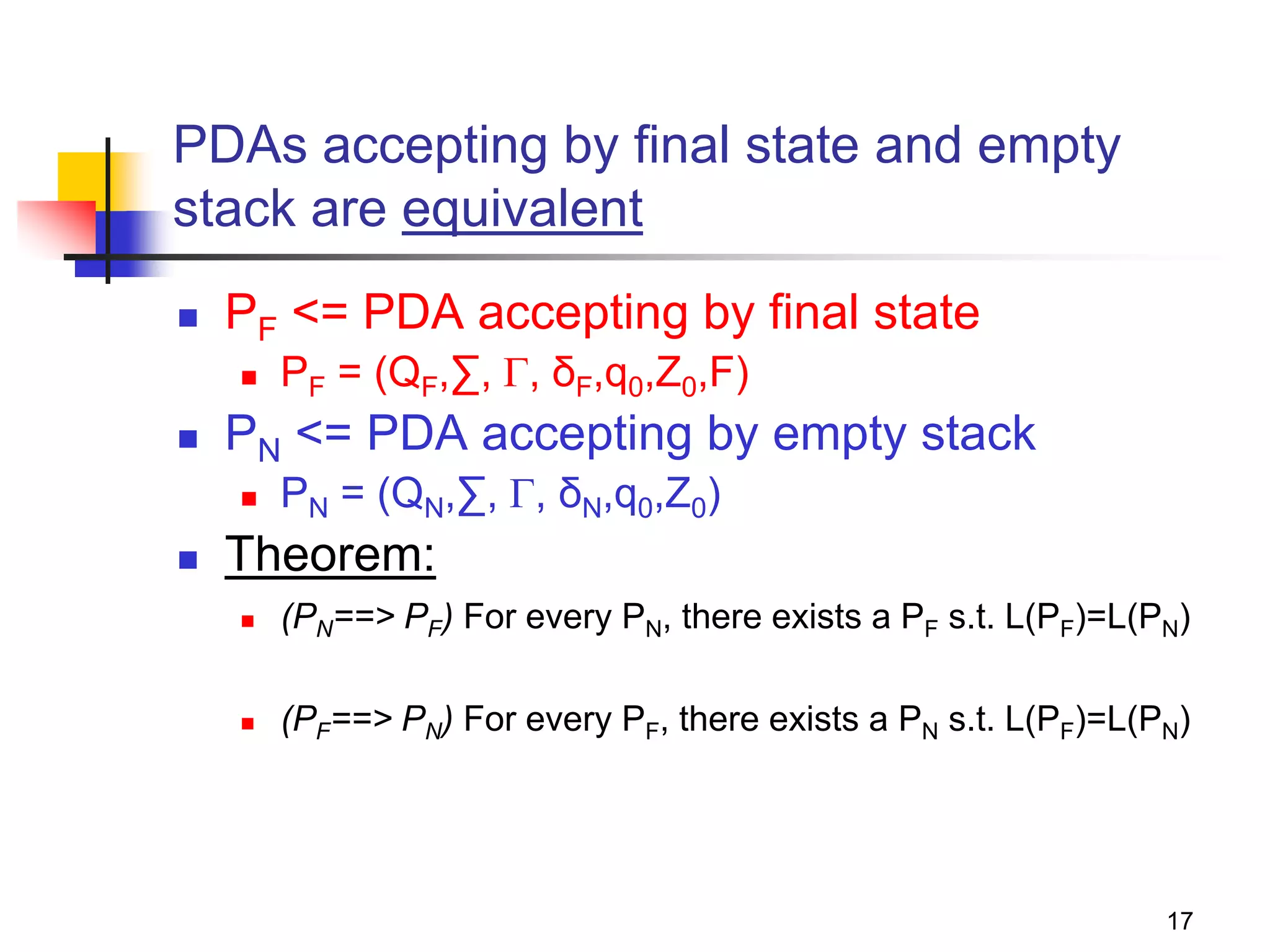
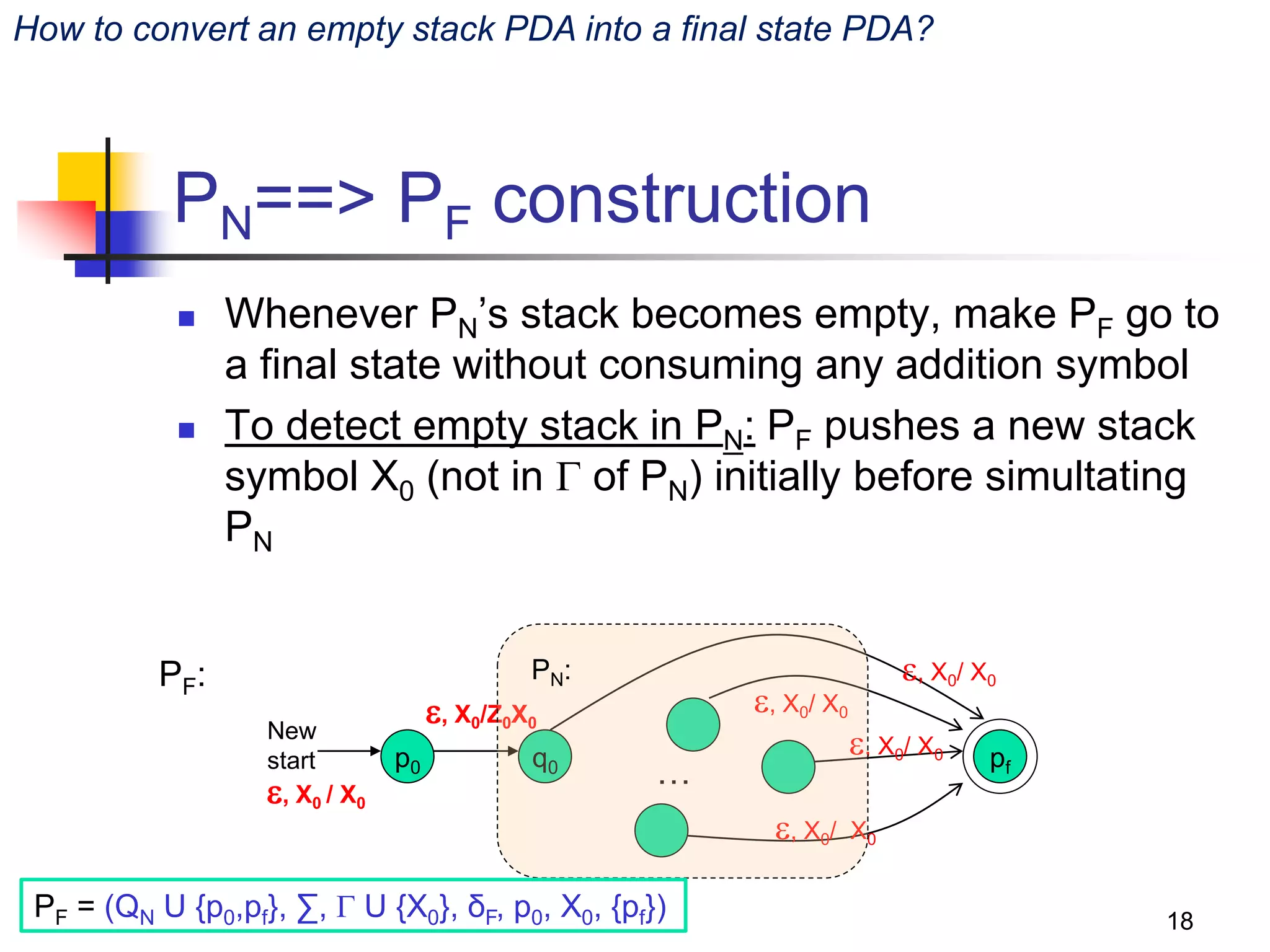
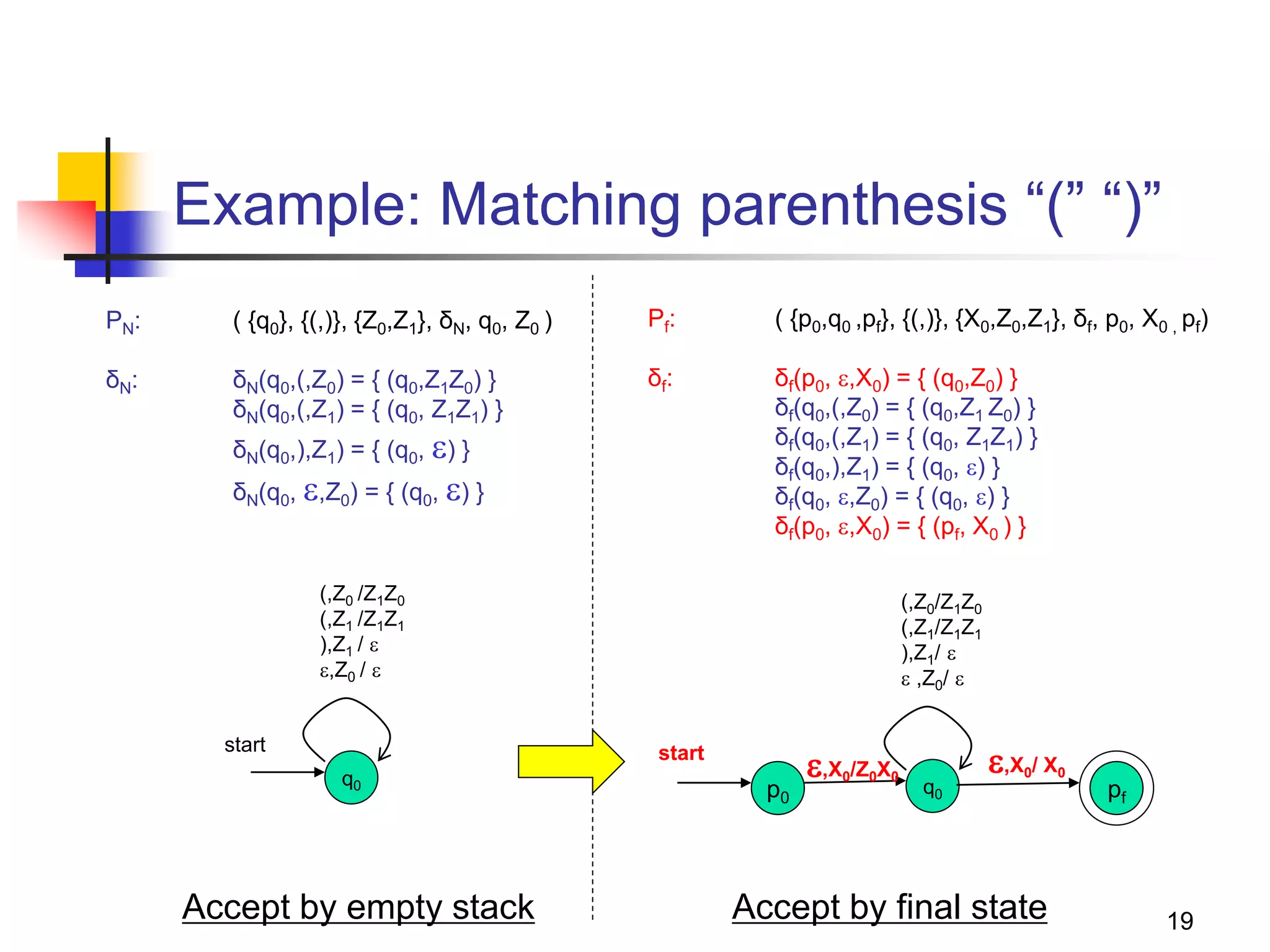
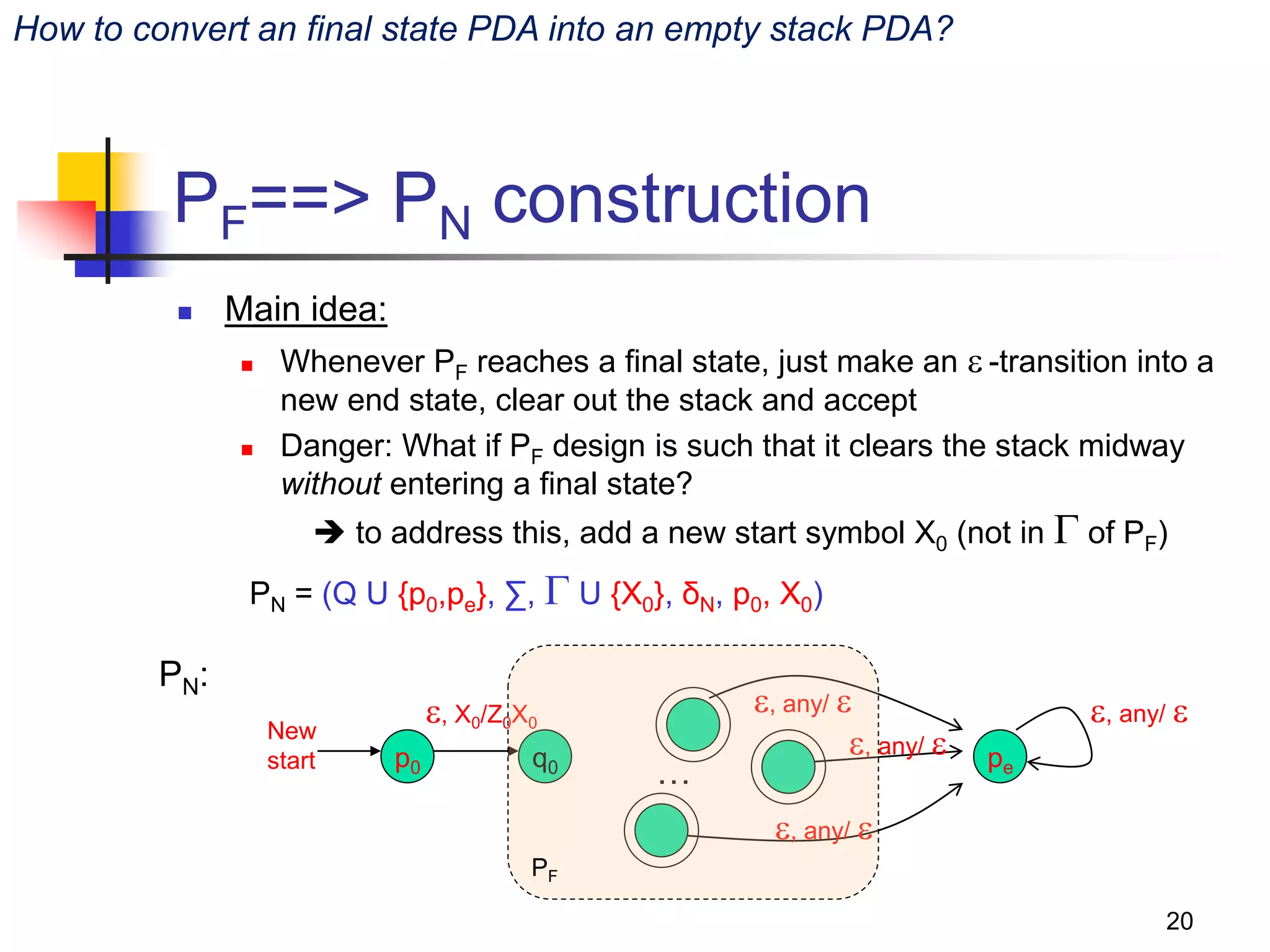
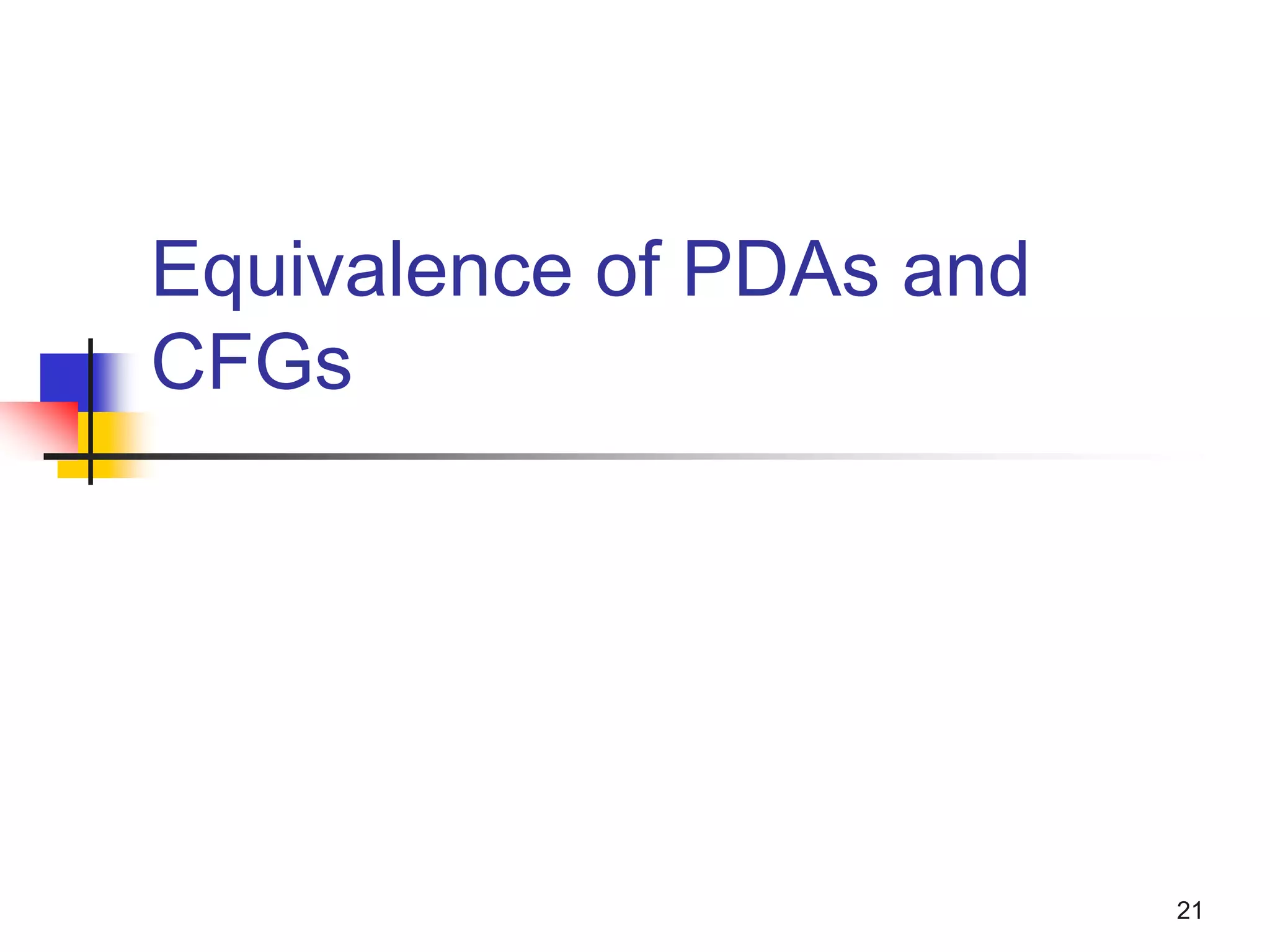
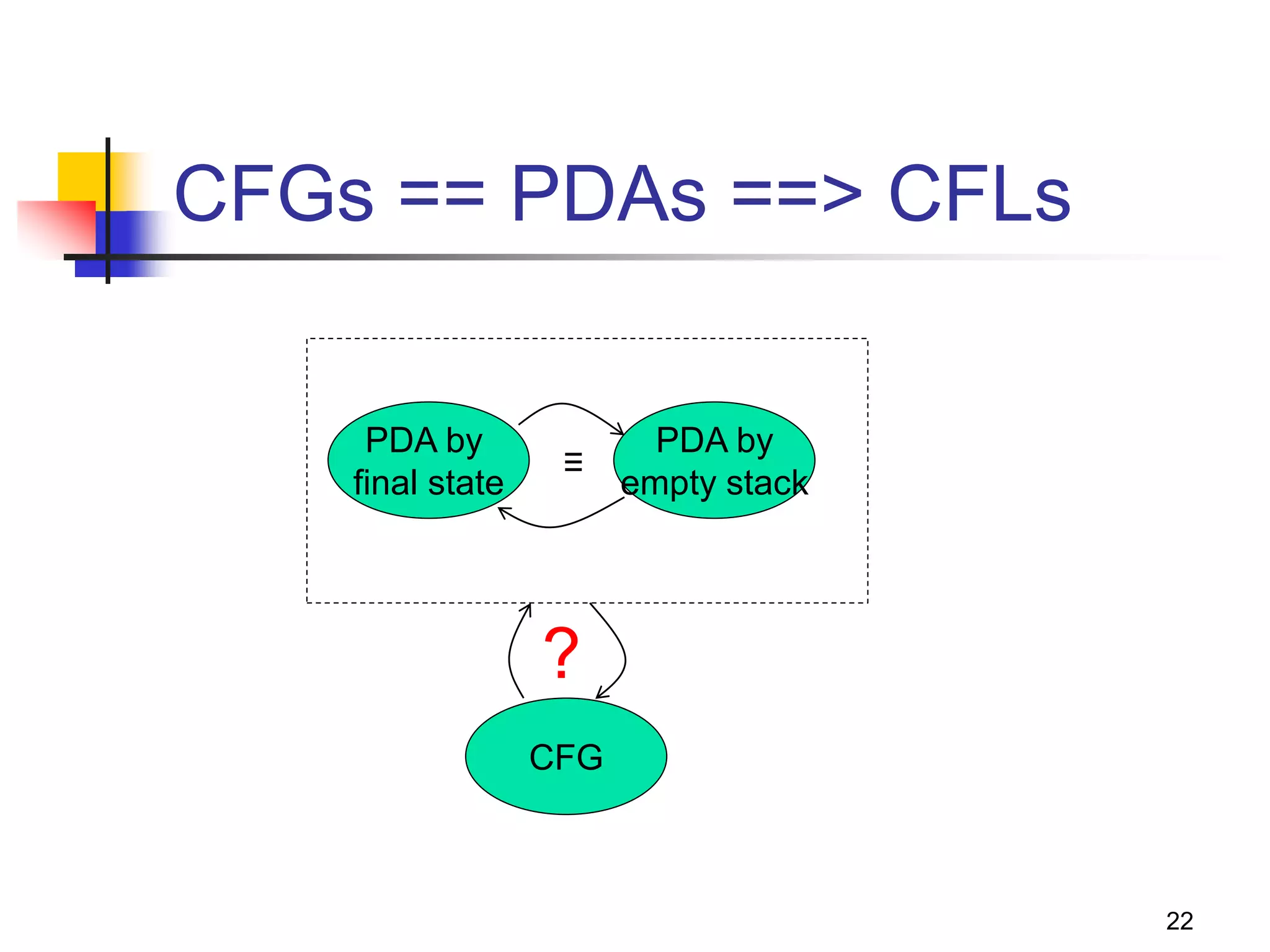
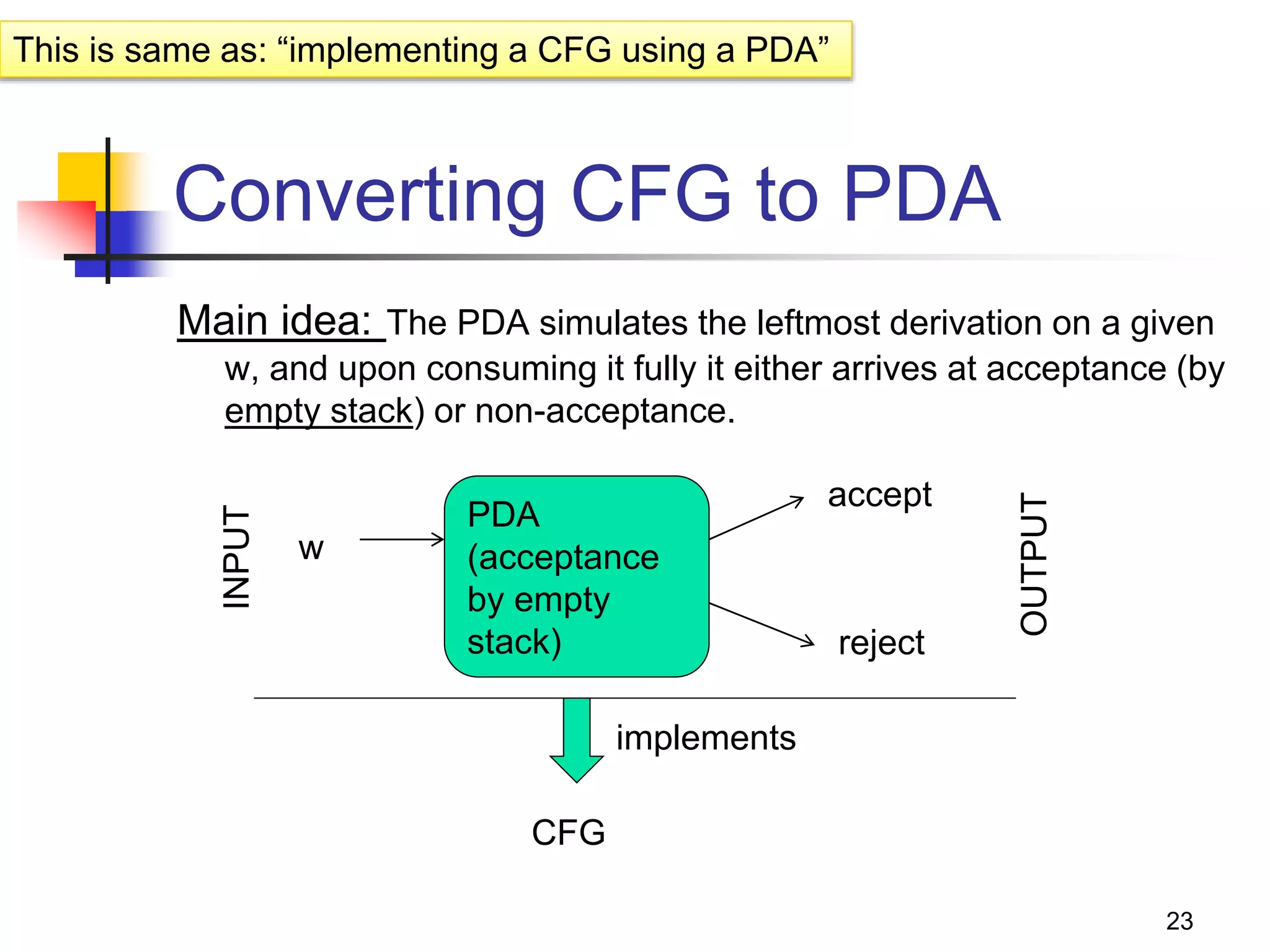
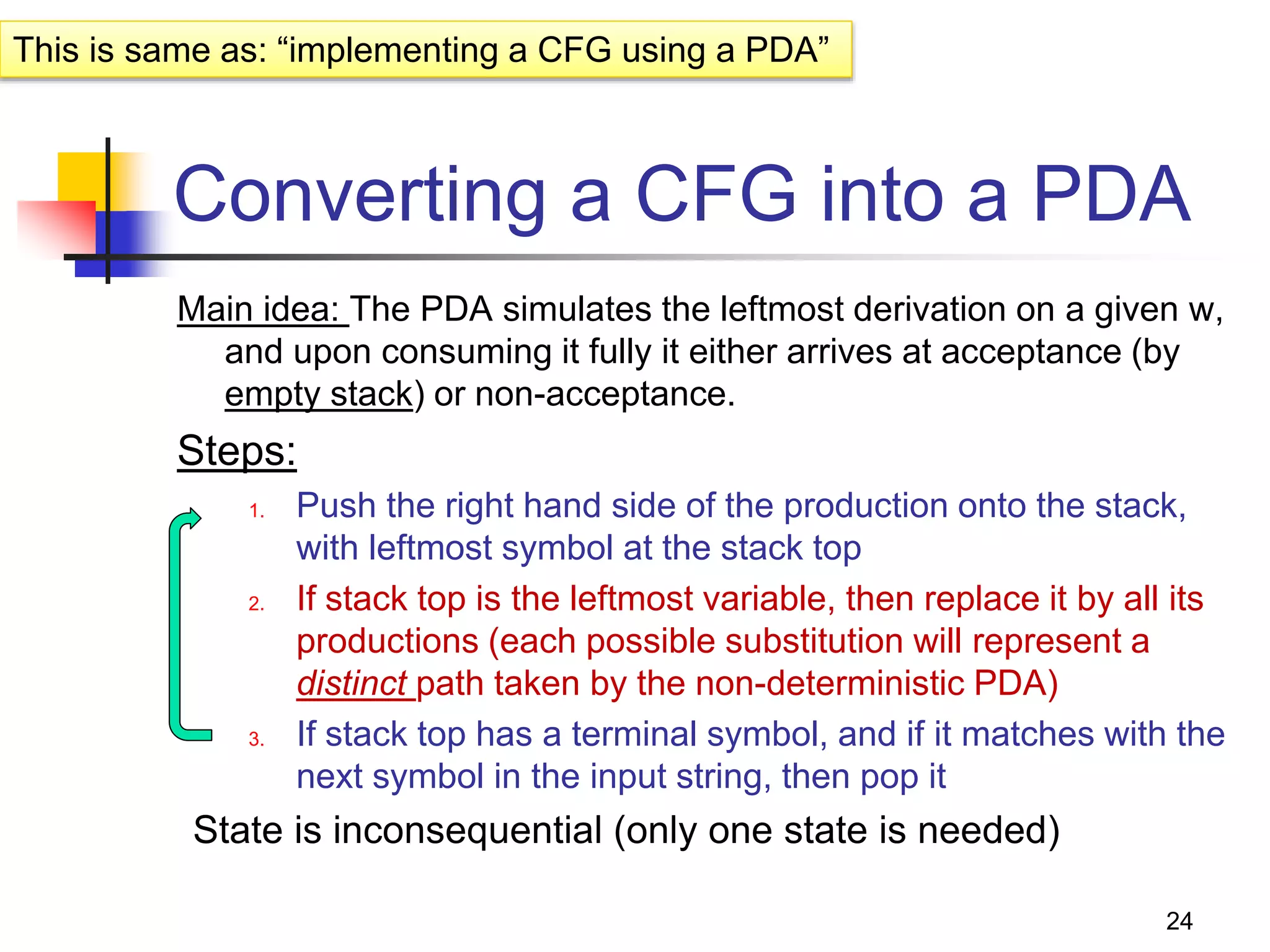
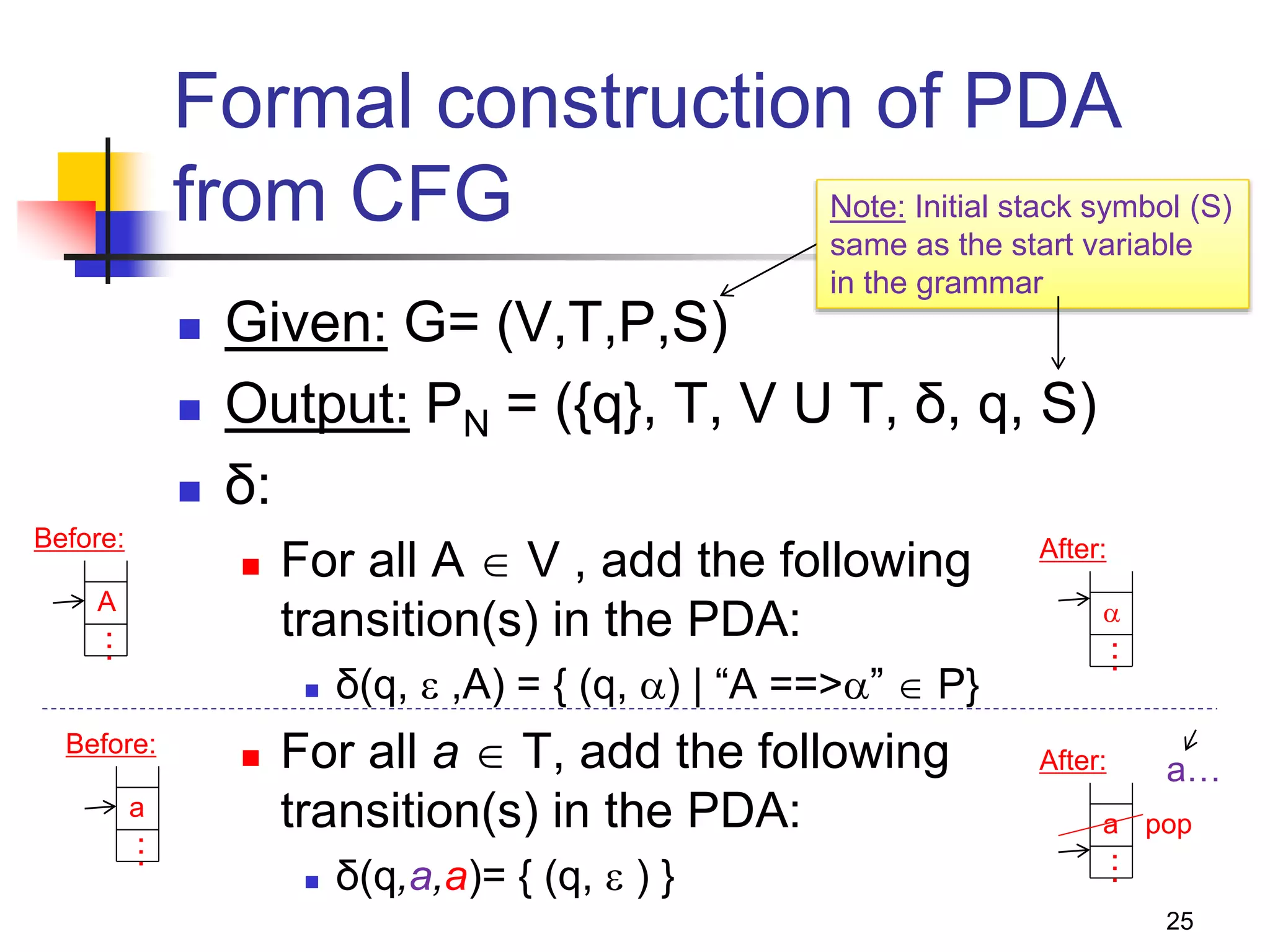
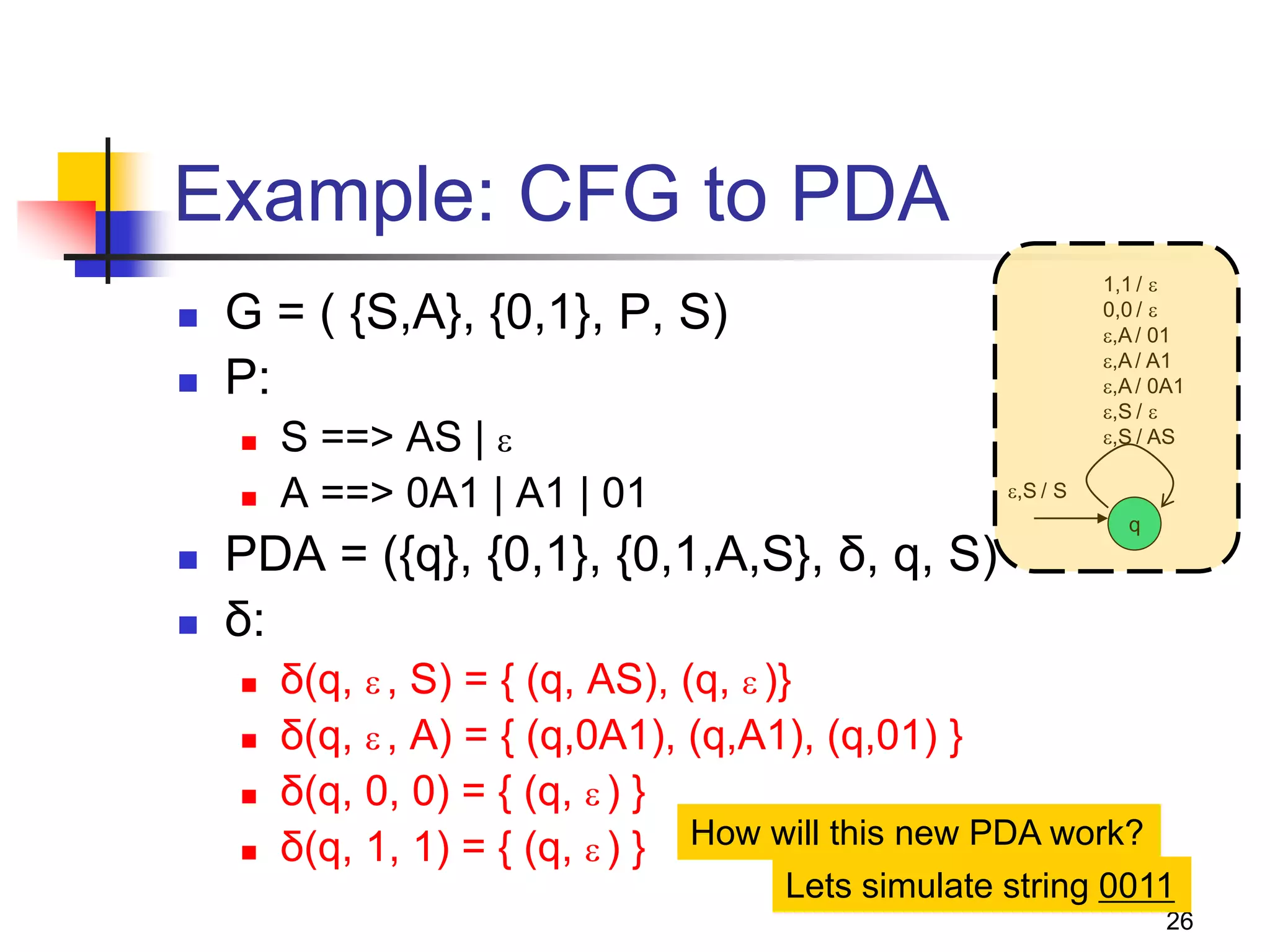
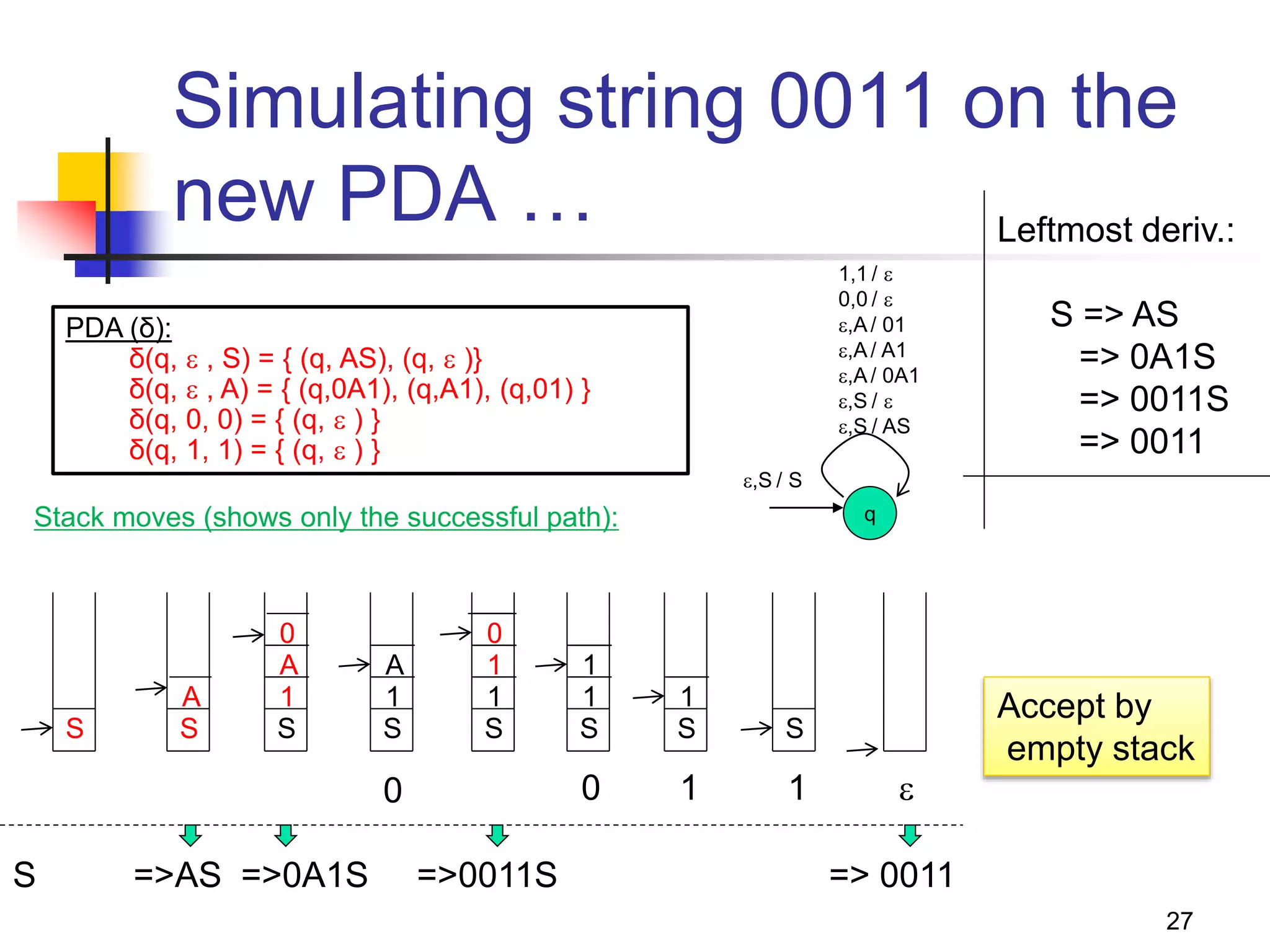
![29
Converting a PDA into a CFG
Main idea: Reverse engineer the
productions from transitions
If δ(q,a,Z) => (p, Y1Y2Y3…Yk):
1. State is changed from q to p;
2. Terminal a is consumed;
3. Stack top symbol Z is popped and replaced with a
sequence of k variables.
Action: Create a grammar variable called
“[qZp]” which includes the following
production:
[qZp] => a[pY1q1] [q1Y2q2] [q2Y3q3]… [qk-1Ykqk]
Proof discussion (in the book)](https://image.slidesharecdn.com/pda11-220921121954-0fd09632/75/PDA-1-1-pptx-26-2048.jpg)
![30
Example: Bracket matching
To avoid confusion, we will use b=“(“ and e=“)”
PN: ( {q0}, {b,e}, {Z0,Z1}, δ, q0, Z0 )
1. δ(q0,b,Z0) = { (q0,Z1Z0) }
2. δ(q0,b,Z1) = { (q0,Z1Z1) }
3. δ(q0,e,Z1) = { (q0, ) }
4. δ(q0, ,Z0) = { (q0, ) }
0. S => [q0Z0q0]
1. [q0Z0q0] => b [q0Z1q0] [q0Z0q0]
2. [q0Z1q0] => b [q0Z1q0] [q0Z1q0]
3. [q0Z1q0] => e
4. [q0Z0q0] =>
Let A=[q0Z0q0]
Let B=[q0Z1q0]
0. S => A
1. A => b B A
2. B => b B B
3. B => e
4. A =>
Simplifying,
0. S => b B S |
1. B => b B B | e
If you were to directly write a CFG:
S => b S e S | ](https://image.slidesharecdn.com/pda11-220921121954-0fd09632/75/PDA-1-1-pptx-27-2048.jpg)


